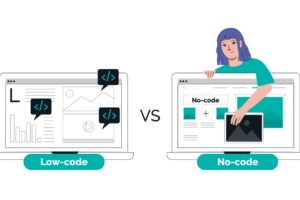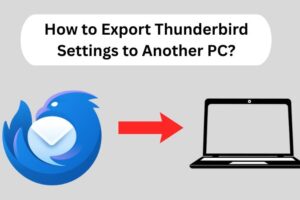Windows 11, the latest version of Microsoft’s desktop OS, was released on October 5, 2021.
The features upgrade is free for Windows 10 PCs that are compatible with Windows 11. However, it’s not clear how many Windows 10 updates Microsoft will release during that release time frame.
Read more about Windows 11 system requirements here.
Since support for Windows 10 won’t be ending anytime soon, users don’t need to upgrade to Windows 11 – unless they want to take advantage of some of its new features. One of the most important new features in Windows 11 is Microsoft Copilot, released on September 26.
To help you decide if upgrading is right for you and to learn about the latest Windows 11 features, here are some differences between Windows 11 and Windows 10.
Design
One major difference between Windows 11 and Windows 10 is its design. Windows 11 offers an interface that is Mac-like, with pastel colors, rounded corners for all windows, and a cleaner interface than its predecessor. Microsoft made the UI as simple as possible to create a clean space to work and play.
Start Menu and Taskbar
Microsoft moved the Start menu to the center of the screen along with the taskbar; However, if users wish, they can move them back to the left side like they are in Windows 10.
Windows 11 also doesn’t support Live Tiles. Live Tiles display useful information that users can view without opening the corresponding apps. Windows 10 is best for users who want to see information in their Start menu at a glance.
Snap Layout
These let users organize their apps and windows more efficiently by grouping them – just like users can group apps on Android and iOS. Snap layouts provide different layout options for arranging different windows. Snaps are a productivity feature that enables users to logically arrange apps and other windows on the screen.
The Snap feature in Windows 10 requires users to manually arrange their windows by hovering over the left or right side of the screen or using keyboard combinations. Snap Layout lets users automatically arrange their open windows as they wish. Snap groups let users immediately return to their Snap layout when they hover over the taskbar.
Microsoft Store
For example, Microsoft has redesigned the Microsoft Store in Windows 11, making it easier for users to find apps and movies. Microsoft Store lets users download all Windows apps in Windows 11 and Windows 10.
Since the Microsoft Store is a Universal Windows Platform app, it is updated independently of Windows 11.
Android Apps
The Microsoft Store also includes Android apps hosted on the Amazon App Store. Customers can use Android apps on Windows 10 with the Your Phone app. By bringing Android apps to Windows 11, Microsoft is meeting user demand to run smartphone apps on their desktop.
To run Android apps in Windows 11, users will need to download the Amazon App Store from the Microsoft Store and download the Windows Subsystem for Android.
Teams, Moving Beyond Skype
Microsoft’s purpose is to make it easier for users to access communication platforms.
Microsoft also replaced Skype with Teams chat capability. This is an effort to encourage more Teams users to use the app’s consumer features and ultimately use Teams outside of work. Microsoft discontinued Skype for Business Online on July 31, 2021.
Touch or Tablet Mode
In Windows 11, tablet mode is enabled by default on the touchscreen and 2-in-1 devices; 2-in-1 devices are those that enter tablet mode when the keyboard is detached. Like Windows 10, the option to turn tablet mode on or off in the taskbar has been removed in Windows 11.
Windows 11 also has larger touch targets and visual cues so users can easily resize and move windows.
Virtual Desktop
Windows 10 associated the Task View feature and allowed users to create multiple virtual desktops, the options were limited. Windows 11 users can set up virtual desktops like they can with a Mac. Users can toggle between multiple desktops simultaneously for work, school, gaming, business, and personal use.
Gaming Upgrade
PC gaming has also improved with Windows 11. Direct Storage takes advantage of modern storage hardware in gaming PCs to streamline the way game data is processed. Windows 11 also includes Auto High Dynamic Range (HDR), which enhances colors in many games.
When a user plays on an HDR monitor, Auto HDR enhances the color range in many DirectX 11 and newer games – even in games where HDR settings were not applied. Windows 11 also includes an Xbox Game Pass.
Performance Improvements
Windows 11 includes performance improvements, such as faster login with Windows Hello, faster web browsing, and faster wake-from-sleep mode. Windows Hello is a biometrics-based technology that lets Windows 10 and 11 users authenticate secure access to their devices, apps, and networks with an iris scan, facial recognition, or fingerprint.
Microsoft has also said that Windows 11 updates – which will run in the background – will be 40% smaller, so they will take less time to download and install. The new operating system will help users extend the battery life on their laptops.
Copilot
Windows Copilot is an AI-powered assistant available in Windows 11, Microsoft 365, and the Edge web browser. Some of the apps that Copilot will affect include – but are not limited to – Photos, Paint, and Clipchamp. Microsoft Copilot became generally available on September 26. Microsoft 365 Copilot became generally available to enterprise customers on November 1, along with Microsoft 365 Chat. CoPilot can be accessed in the taskbar or with the Windows key + C keyboard shortcut.







